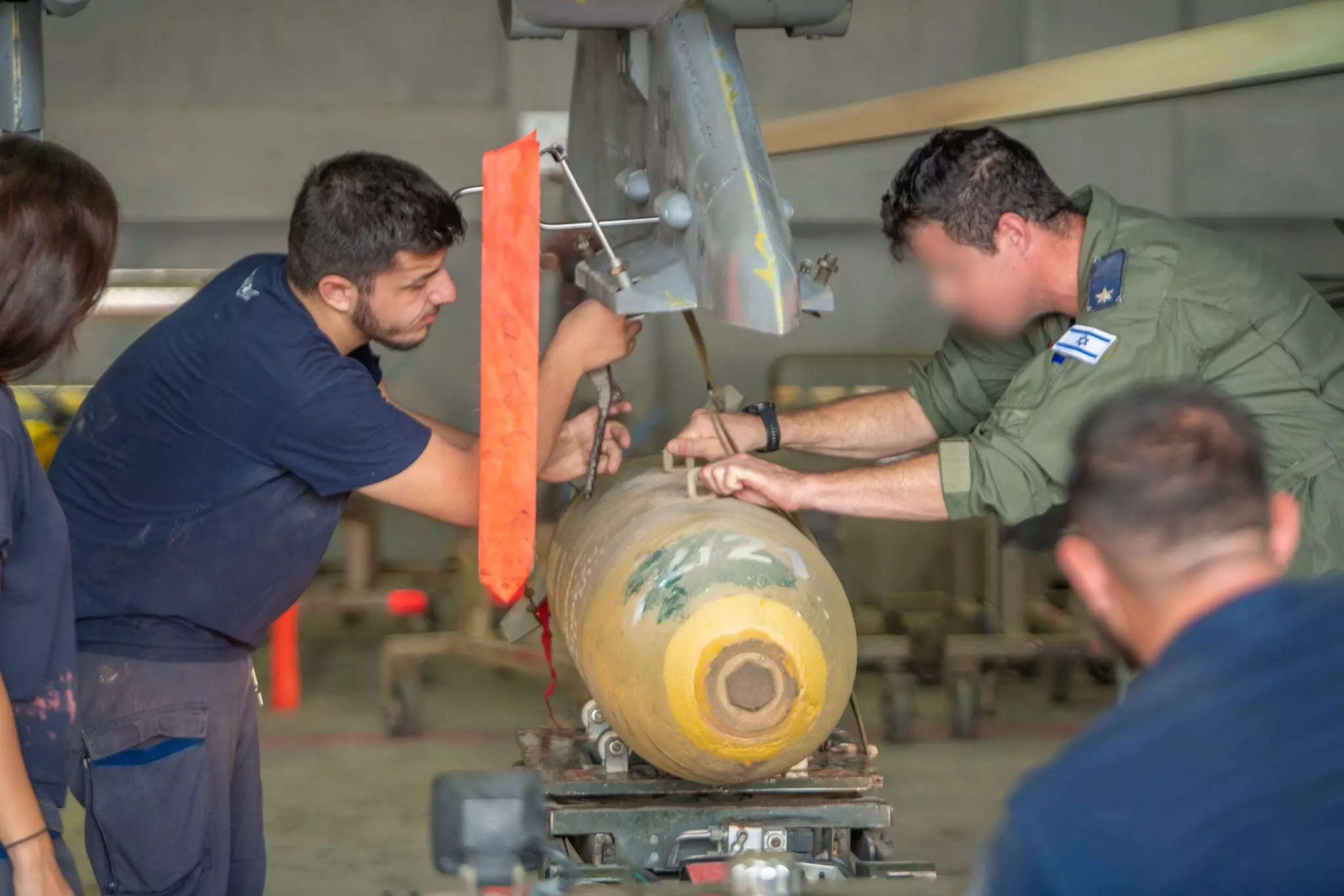In the ongoing conflict between Israel and Hamas in Gaza, nearly half of the air-to-ground munitions employed by Israel are unguided, commonly known as “dumb bombs.”
The report, citing an evaluation by the Office of the Director of National Intelligence (ODNI), said that between 40% and 45% of the 29,000 bombs dropped by the Israeli air force on Gaza since October 7 were unguided, with the remaining being precision-guided.
Israeli officials have refrained from commenting on the specific types of munitions used. However, EurAsian Times reported last month that the Israeli Air Force is deploying the US-made M117, a Cold War-era unguided 750-pound air-dropped munition.
A US official informed CNN that American intelligence believes Israel employs unguided bombs in conjunction with “dive-bombing,” a tactic involving steep dives in fighter jets, asserting that this method enhances precision by bringing the bomb closer to its target.
The official added that the US considers an unguided munition dropped via dive-bombing similarly precise to a guided one.

Israel’s reported deployment of 29,000 air-to-ground munitions, which translates to an average of approximately 480 bombs per day, considering the period from October 7 to December 13 (excluding the 7-day ceasefire).
This observation suggests a notable decrease in the rate of strikes compared to the initial week of the conflict when the average rate was estimated at around 1,000 bombs per day.
Meanwhile, this revelation emerges amid a growing public disagreement between the Israeli leadership and the White House.
President Joe Biden recently criticized Israel’s tactics in Gaza and expressed concern that the country was “starting to lose” global support due to its “indiscriminate bombing” campaign.
Biden called for a change in approach and characterized Israeli Prime Minister Benjamin Netanyahu’s coalition government as the country’s “most conservative” in history.
Furthermore, at the United Nations, Israel’s military campaign faced widespread international condemnation, with the General Assembly voting 153-10 in favor of a ceasefire in the conflict, while 23 nations abstained.
The United States and Israel were among the ten nations voting against the measure, marking a significant rebuke on the global stage.
Israel Adopting Russia’s Approach?
The extensive use of unguided munitions is likely to stir controversy due to the potential for collateral damage, especially in densely populated urban areas such as Gaza.
Concerns raised by analysts and experts cast doubt on Israel’s assertion of minimizing civilian casualties, particularly given the reported rates of employing unguided munitions.
The reported number of Palestinian casualties in Gaza has surpassed 18,000 deaths in the last two months, according to the Gaza Ministry of Health, controlled by Hamas.
The potential for an increase in civilian casualties due to the use of such bombs is already evident in the Ukraine war, where Moscow deployed a significant number of these munitions.
Russia’s reliance on outdated unguided bombs during the war is likely attributed to a fast depletion of precision-guided bombs and missiles. However, the employment of “dumb bombs” by the Kremlin was not confined to the conflict in Ukraine.
For instance, the majority of published estimates indicate that during the initial months of Russian air operations in Syria, over 80 percent of the ordnance delivered was unguided. Russian Su-24s and Su-25s were typically deploying free-falling “dumb bombs” with minimal target identification during this period.
In a report, RAND Corporation disclosed that even in strategic long-range strike operations, the Russian Aerospace Forces (VKS) generally avoided using precision-guided munition (PGM)-equipped bombers and instead opted for Tu-22M3s carrying unguided munitions.
Cost concerns likely influenced this decision, as sorties with Tu-22M3s using unguided bombs were significantly more cost-effective.
The report pointed out that cost considerations and constraints related to munitions production and stockpiles played a significant role in shaping VKS decisions regarding the use of precision-guided munitions (PGMs) and PGM-equipped aircraft.
Moreover, it was suggested that Moscow had limited experience employing precision-guided munitions (PGMs) and was hesitant to invest significantly in expensive guided weapon stocks.
In contrast, the US predominantly used precision-guided munitions on dynamic targets during the counter-ISIS air war in Iraq and Syria.
Furthermore, US military aircraft exhibited superior targeting performance, benefiting from technological advantages over most deployed Russian platforms and a substantially higher number of US ISR (intelligence, surveillance, and reconnaissance) sorties.
- Contact the author at ashishmichel(at)gmail.com
- Follow EurAsian Times on Google News